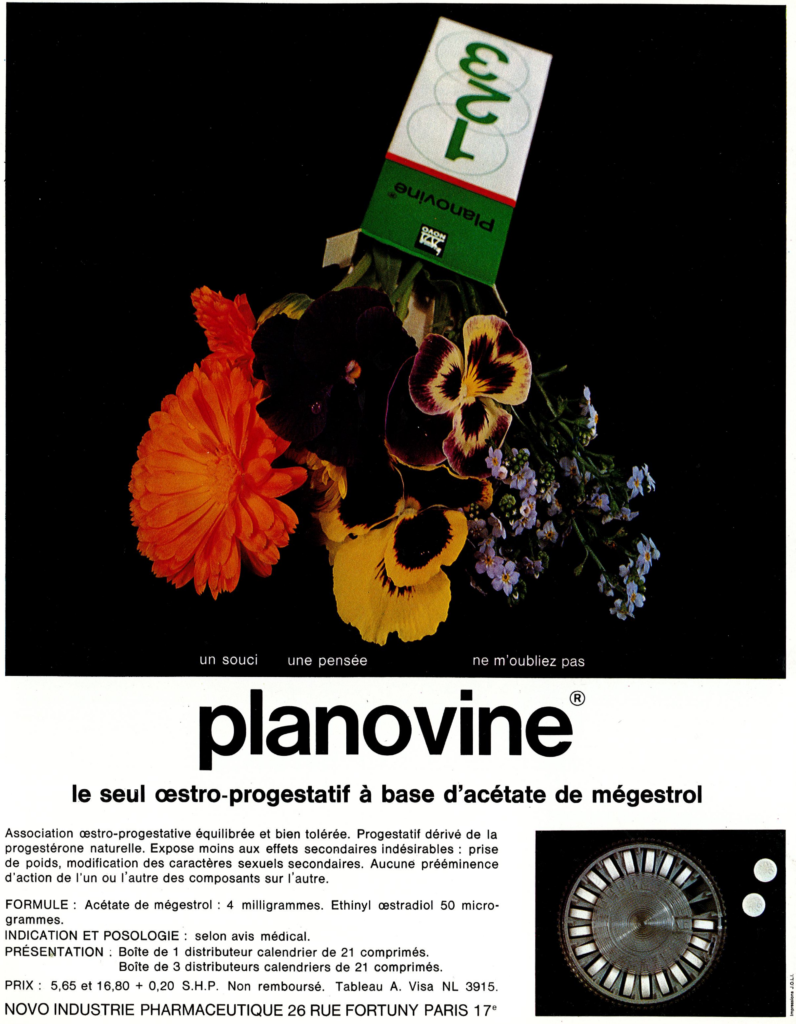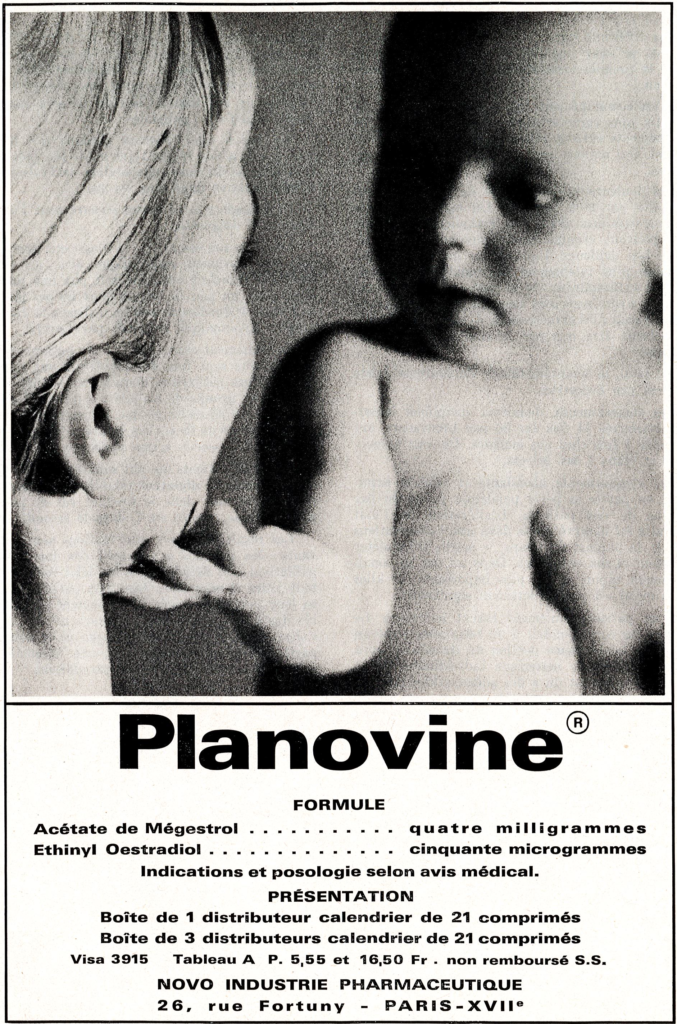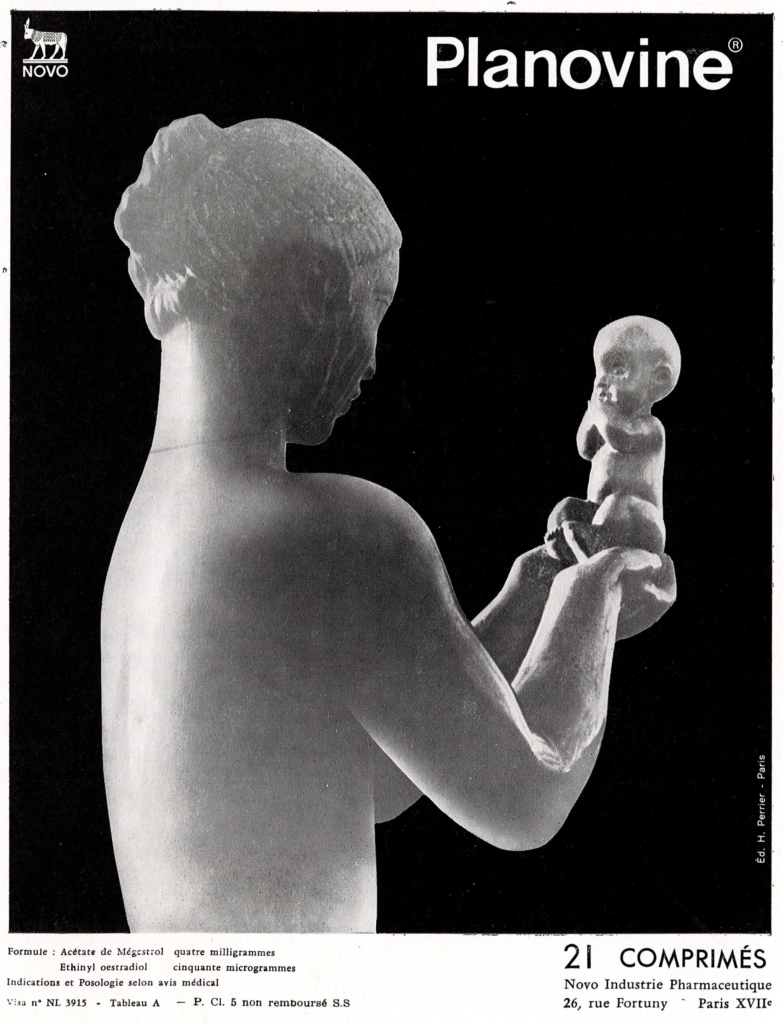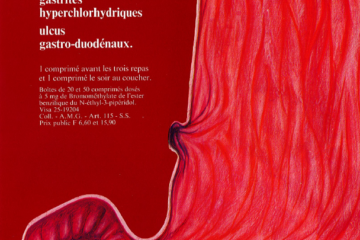Planovine was an oral contraceptive, developed in the late 1960s, associating the synthetic progesterone derivative megestrol acetate and the synthetic estrogen ethinyl estradiol (17a-ethinyl estradiol). The development of contraceptive pills was almost a revolution at that time in many European countries. The combined use of minimal doses of a progesterone derivative and estrogen was useful to ensure a good control of the menstrual cycle, but also to reduce the incidence of negative systemic side effects such as water retention and edema.
Megestrol acetate is still used today in human (and veterinary) medicine. This synthetic progestin functions as a glucocorticoid and progesterone receptors agonist. It has been used to enhance appetite, and in the treatment of breast and endometrial cancers. But its use has been suspected to increase risk of developing a reduction in memory and/or a psychiatric disorder. 17a-ethinyl estradiol (known as EE2) is a synthetic estrogen also largely used in many formulations, particularly in combined oral contraceptive pills and vaginal rings.
These two compounds are both highly potent chemicals and because of their extensive use, they are both largely present in the environment worldwide, notably causing damages to the aquatic milieu. They may induce reproductive impairment in fish.
The advertising around Planovine® in the early 1070s was subtle and quite discreet because it touched the very sensitive topic of contraception. The focus was made on the naturality of the product, using the visual language of a woman and its child or a stone statue of a woman holding an infant, evoking notions of purity and planned reproduction.





